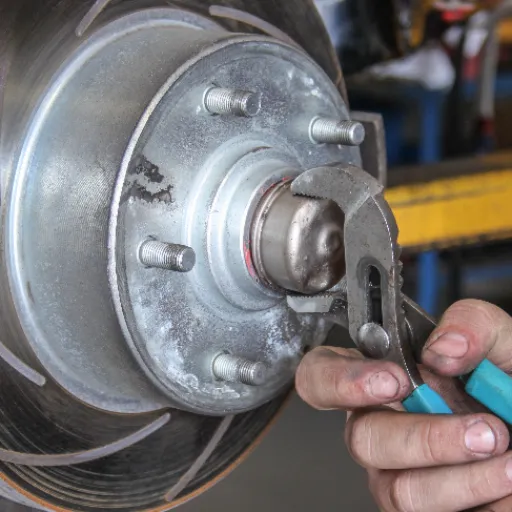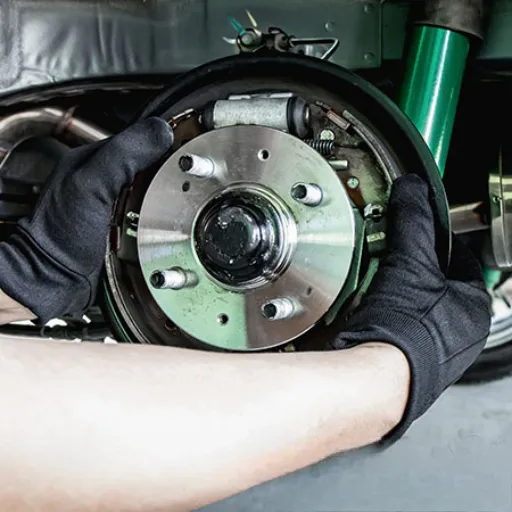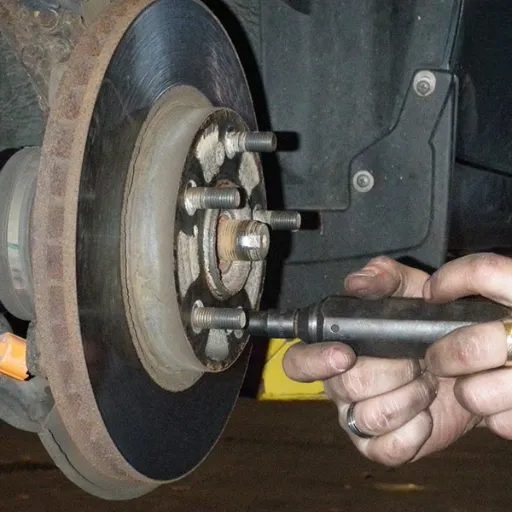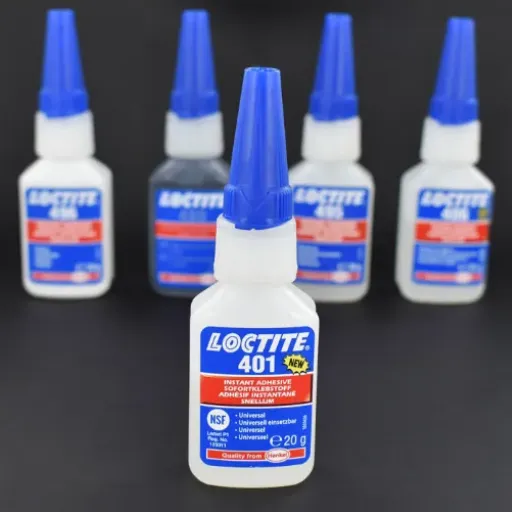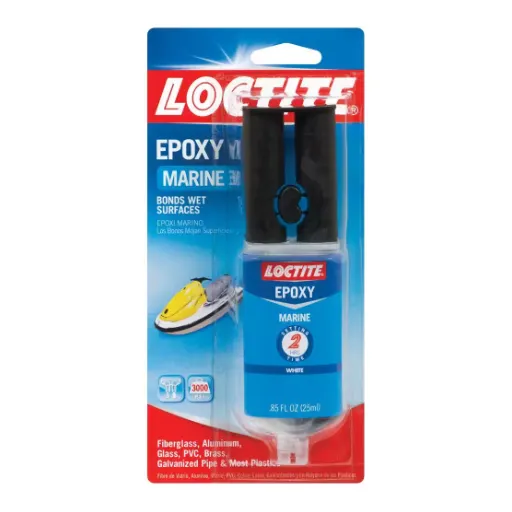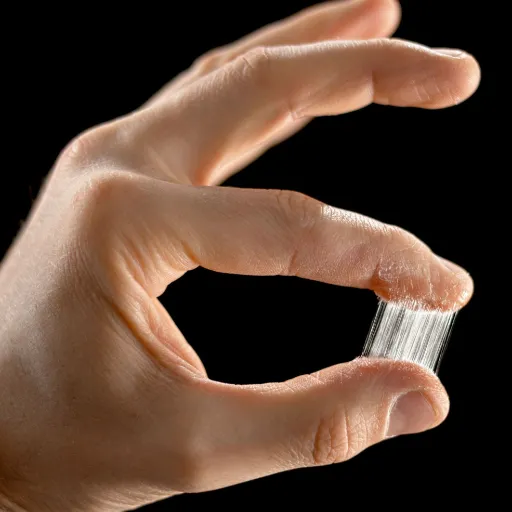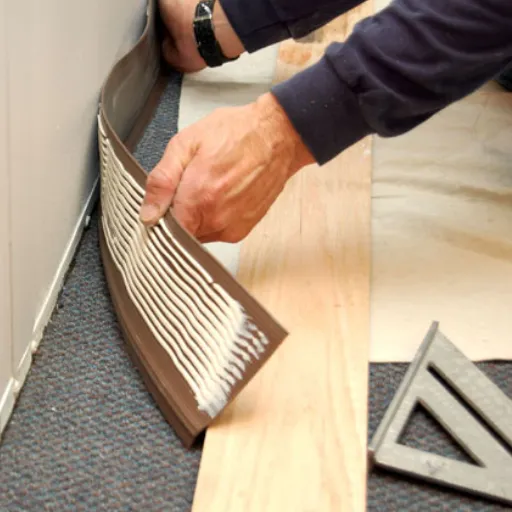Finding the appropriate glue for concrete can be a challenge to ensure that the bond holds for posterity. Concrete glue will guarantee permanent results and save you money on repairs if you are out fixing things, attaching fixtures, or doing a bit of craft work. But which glue is best for concrete, to choose amongst all kinds of glues on the market? Enter this guide, which will discuss the types of glue best suited for concrete, what to look for in an adhesive option, and key tips for ensuring firm, proper bonding. Whatever your status, beginner or professional, all the information you may require for making a knowledgeable decision is within this article.
Key Features to Look for in Concrete Adhesives
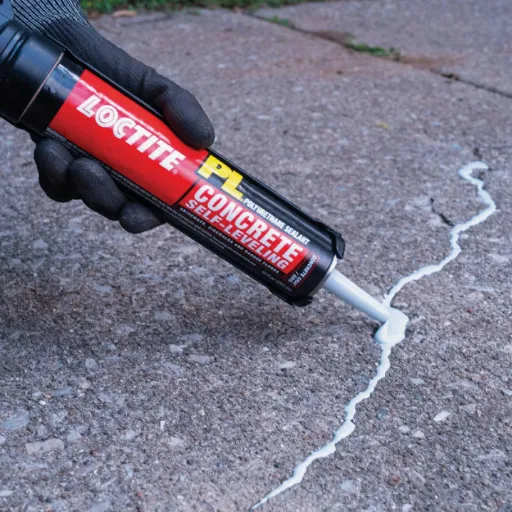
Strength and Durability
As the primary feature, the adhesive must withstand heavy-duty applications, bonding strongly and for an extended duration to the surface. Must specifically be rated for use with concrete.
Moisture Resistance
For outdoor and high-humidity applications, choose an adhesive that can withstand exposure to water and moisture without losing its properties.
Flexibility
Adhesives with a certain degree of flexibility allow the material to move slightly, making crack formation less likely in the long run.
Curing Time
Consider the time required for the adhesive to set and cure. While quick-setting adhesives will save your precious time, on the other hand, slow-curing options may give you a chance to reposition.
Temperature Tolerance
If your project will be exposed to extreme temperatures outdoors, ensure the adhesive can withstand both hot and cold conditions.
Ease of Application
An adhesive that is easy to apply using whichever tools you prefer, be it a cartridge, tube, or ready-mix.
Material Compatibility
It is impossible to select your adhesive when your knowledge of a particular material is incomplete. Concrete often comes into contact with metals, woods, glass, plastics, or other concretes. It is essential to select an adhesive that has been made specially for use with both the concrete and the secondary material to be joined. Epoxy adhesives, for instance, are very useful for bonding concrete to metal, as they possess good strength and resistance to environmental factors. Polyurethane adhesives should be considered for joining concrete to wood, however, because of their flexibility and workability with material movement. Always check the adhesive manufacturer’s specifications to ensure compatibility with your materials.
Environmental Resistance
Environmental resistance generally refers to the capacity of an adhesive to sustain its bond strength and integrity under various environmental conditions. Most temperature, moisture, UV ray exposure, and chemical exposure mar the performance of an adhesive. For instance, epoxies are generally able to resist very high and low temperatures, as well as chemical exposures to some extent, making them highly suitable for industrial and outdoor applications. On the other hand, polyurethane adhesives tend to resist water and moisture better and, thus, are most widely used on wood and on surfaces exposed to high humidity. Therefore, to ensure long-term performance, you must always match the environmental resistance of the adhesive to the specific conditions of your application.
Strength and Durability
Both the substrates and the environments to which the adhesives will be exposed constitute prime considerations for tensile testing and durability assessment. Epoxy adhesives excel in tensile strength but are rarely specified for tensile load-bearing applications over other adhesives. The bonding is unyielding and permanent, withstands vibration and heavy shocks, and is used particularly for structural bonding.
However, polyurethane adhesives, by nature, possess a unique combination of flexibility and strength. Their flexibility allows polyurethane adhesives to absorb shock as well as to bear slight movements or expansions of the bonded materials without damaging the bond. This unique flexibility is particularly desirable for applications involving constant movement or vibration, such as those found in automotive or construction environments.
Ultimately, when choosing between adhesives, the project’s needs should take precedence, along with any performance data that can ensure bond reliability and durability.
Curing Time
The curing times of polyurethane adhesives can vary depending on environmental conditions, such as temperature and humidity, as well as the specific formulation of the adhesive. In general, these adhesives can reach the initial stage of curing within 24 to 48 hours; however, under standard conditions, it takes approximately 7 days for the adhesive to be considered fully cured. Hence, fast-curing formulations are ideally used for situations where time is of the essence, offering curing times in several hours. Always maintain the recommended clamping pressure and curing conditions as specified by the manufacturer within the timeframe suggested for optimal results.
Top-Rated Concrete Adhesives
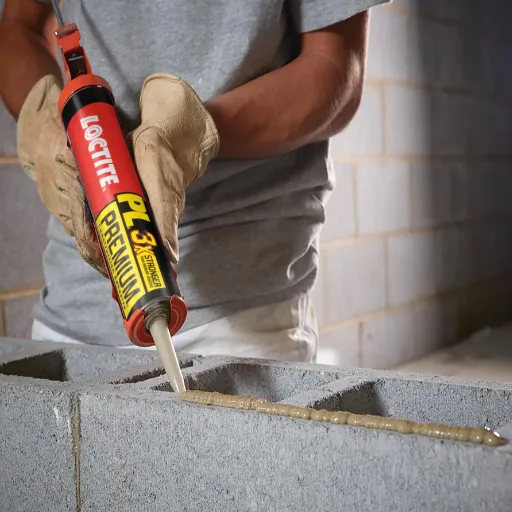
Known for its strong bond and versatility, it works well on a variety of surfaces, including concrete and wood. It has water-resistant qualities and withstands weathering well, making it suitable for both indoor and outdoor applications.
This is an extremely binding thing. It provides a firm initial grip quickly and is quick-drying, making it ideal for concrete repairs and suitable for various construction projects.
It is flexible and weather-resistant, purposely made for sealing cracks on concrete surfaces.
It’s easy to work with and bonds well to concrete. For repairing cracks, expansion joints, and other typical problems encountered in concrete structures, it is best.
Being able to bond a wide range of materials, this adhesive provides excellent strength and durability. It generally stands well under any condition and is easy to apply.
Epoxy-Based Adhesives
Adhesives composed of epoxy are widely acclaimed for their almost unequaled strength and durability, coupled with the ability to withstand adverse environmental conditions. These adhesives consist of two components—a resin and a hardener—which, when intermixed, create a chemical reaction that forms a strong bond. Epoxy adhesives are employed in concrete repairs, crack filling, and bonding incompatible materials. Due to their versatility and high-performance characteristics, these adhesives are widely used in the construction, automotive, and industrial sectors. Lack of surface preparation and failure to adhere to the manufacturer’s guidelines invariably result in less-than-optimum bonding, and it should therefore be avoided.
Polyurethane Adhesives
Because of their extreme flexibility, durability, and ability to adhere to almost any surface, polyurethane glues are, in a manner of speaking, mighty. They work fantastically with wood, plastics, metals, and even fabrics. They are unable to do their best if there is moisture, temperature changes, or vibration. Due to their versatility, polyurethane glues are highly regarded and utilized in various industries, including general construction, shoe manufacturing, and automobile production. Adequate curing time and a “clean” surface are the two ways to ensure a robust and long-lasting bond will be given to the adhesive.
Acrylic Adhesives
Acrylic adhesives are versatile bonding agents that exhibit high neck strength and resistance to various environmental factors. They get attached to practically any surface; metals, plastics, and glass are popular choices of surfaces. Conditions, such as high temperatures and intense UV, which are generally adverse to good weathering, provide the capabilities to work indoors or outdoors. Acrylic adhesives are fast-bonding and have become a standard option throughout the electronics industry and automotive construction. A great bond requires correct application on the surfaces, apart from just the surface preparation.
Specialty Adhesives
Specialty adhesives are specifically designed to meet the demands of industrial specialties and high-performance applications. They are designed to bond substances under trying circumstances wherein conventional bonding mechanisms usually fail. For various purposes, these adhesives are mostly temperature-resistant, chemistry-resistant, or environmentally resistant, thus finding wide applications in aerospace, medical devices, and renewable energy technology. Advancing formulations from specialty adhesives, these are also designed for bonding unlike materials, such as metal-to-plastic or composite-to-composite. Specialty adhesives, which combine technology and precision engineering, continue to grow as an essential component in manufacturing and design.
Step-by-Step Application Guide
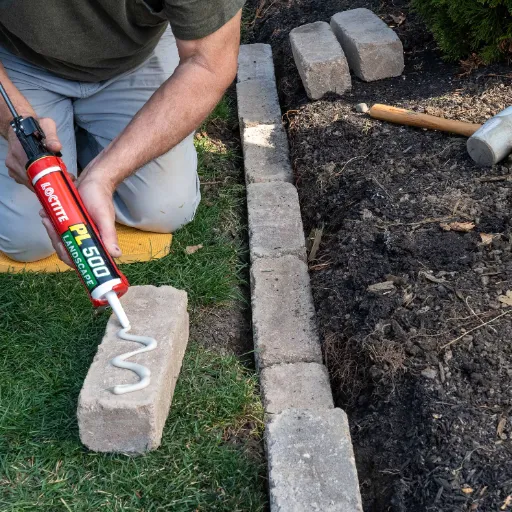
Surface Preparation
The bonding surfaces must be prepared to be clean, dry, and free from dust, grease, or any other contaminants. Use a suitable cleaning agent if necessary.
Adhesive Selection
Select the specialty adhesive required, depending on the materials being bonded and the application criteria (e.g., temperature resistance, flexibility).
Application of Adhesive
Working as per instructions, apply the adhesive evenly onto either one or both surfaces. Do not overapply, as this may cause unwanted buildup.
Positioning and Bonding
Position these components correctly and apply maximum pressure. Clamping or other supports may be needed to hold alignment until curing is complete.
Curing Process
Allow curing according to the maximum and minimum time and environmental conditions specified in the product instructions, without disturbing the bond.
Inspection and Testing
After curing, inspect the bond for its strength and suitability for the specific use-based needs. Test only if necessary.
Surface Preparation
Surface preparation is a crucial step to guarantee maximum efficacy of specialty adhesives. The primary role that surface treatment plays is to elevate adhesion by removing contaminants and establishing the optimal bonding platform. Some usual surface-preparation procedures include cleaning, drying, and roughening of the substrate. Cleaning stipulates the elimination of any contaminants such as dirt, grease, or oils, which could hinder the proper functioning of the adhesive. Various cleaning methods, such as the use of solvents or simple soap, can be employed depending on the surface. Dry surfaces are equally essential, as the presence of moisture results in weakening of the bond. Furthermore, roughening or abrading of the surface can assist by increasing the surface area and improving mechanical grip. The surface preparation methods should be selected according to the material of the object and the type of adhesive to achieve the best results; therefore, always refer to the product guidelines.
Applying the Adhesive
To achieve the strongest bond, it is essential to apply the adhesive strictly according to the manufacturer’s guidelines. The adhesive must be spread evenly over the prepared surface using the specified tool, such as a brush, roller, or applicator. Next, it is essential to allow for the adhesive’s open time; this open time enables the adhesive to cure and thus obtain a stronger bond. Then, depending on the requirements, apply reasonable pressure to the joining surfaces with weights or clamps. Following this procedure will guarantee an increased lifespan and strength of the bond over time. For advanced methods or specific use cases, studying the product guidelines and various online resources, such as videos or industry forums, can provide additional helpful tips.
Bonding the Materials
Among the types of colloidal materials, one of the commonly asked questions is “What is the strongest glue for general applications?” Computer data and user trends often recommend epoxy glues due to their exceptional strength, durability, and resistance to environmental conditions, including water, heat, and chemicals. Epoxy is well-suited to bond a wide range of materials, including metal, wood, plastic, and ceramic. For other specific purposes, such as bonding lightweight materials or creating flexible bonds, however, specialized adhesives like polyurethane or cyanoacrylate are commonly preferred. When selecting an adhesive, it is essential to thoroughly consider the properties of the materials being joined and the intended use.
Curing and Finishing
The curing process of adhesives is a crucial step that determines the strength and longevity of the bond. First, curing is the chemical reaction that happens when the glue hardens and gains strength. According to the adhesive type, it may require curing through exposure to air, heat, moisture, or UV light, among other conditions. For example, epoxy adhesives require a specific curing temperature to cure, whereas cyanoacrylates cure very quickly by reacting with moisture in the atmosphere.
Finishing, meanwhile, is the preparation of the bonded object for use. In doing so, it may be subjected to sanding, polishing, or cleaning to achieve a professional level. Correct curing and finishing procedures are crucial for maintaining the appearance and prolonging the life of the joint, ultimately leading to improved performance. Manufacturers’ recommended curing times and instructions for finishing should always be followed by the user.
Common Challenges When Using Concrete Adhesives
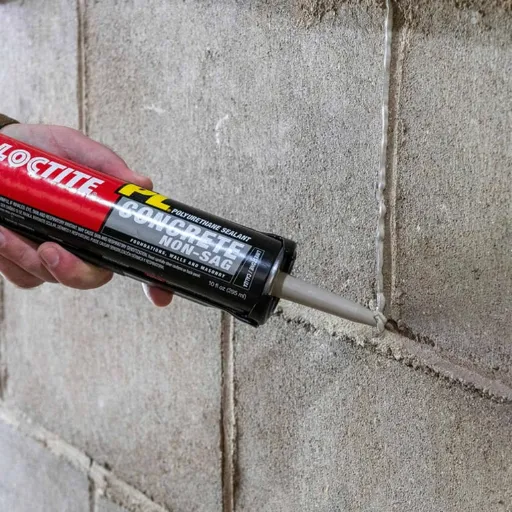
Surfaces not clean, dry, and free of debris clash with bonding efforts and hinder the adhesive from doing its job.
Applying too much or too little adhesive, or failing to ensure adequate coverage, results in shaky or non-functional adhesion.
Accelerating the curing process or subjecting the adhesive to unfavourable conditions, such as extreme temperatures or moisture, weakens the bond.
Not all adhesives are suitable for all purposes. Choosing the wrong product would mean poor performance and reduced durability.
Weather and moisture fluctuations can compromise an adhesive’s performance, mainly when not adequately accounted for.
Skipping Surface Preparation
Surface preparation is a crucial stage that cannot be skipped in the adhesive application process. The application of glue to surfaces lacking proper cleaning, drying, or surface treatments can significantly contribute to weakening the bond. The presence of any layer of dust, grease, or moisture on surfaces will constitute a barrier to ensure proper bonding; over time, the bond strength will weaken, or the bond might completely fail. Recent data indicate that many users have benefited from seeking solutions to improper bonding resulting from inadequate surface treatment, thereby highlighting the importance of addressing this issue. To ensure strong and permanent bonding, always undertake surface readiness as described in the product’s manual, which may recommend specific cleaning agents or treatments for a given material.
Using the Wrong Adhesive
The application of an inappropriate adhesive is one of the common mistakes that practitioners often make, leading to either bonding failure or damage to the material. According to recent search engine query data, it has become evident that a significant number of users frequently inquire about, “How do I choose the right adhesive for my project?” The answer would be: understanding the requirements of the specific materials you are working on and the conditions to which these materials will be subjected. An example would be an adhesive that performs well in high-temperature environments versus another that binds to some porous or flexible surfaces. Always consider the manufacturer’s specifications first. When in doubt, consult a knowledgeable resource or seek professional recommendations on how to match the adhesive to your project’s specific requirements. Research has shown that choosing the right adhesive improves both the longevity and the actual bond strength.
Applying Too Much Adhesive
A heavy application may create performance issues, surface damage, or compromise the bond. Based on recent search data and user queries, a concern often raised by buyers is whether adding more glue bonds improves the quality of the product. In fact, the opposite is true—the more adhesive is applied, the more uneven the sitting time becomes, and less bond strength is created in some areas, allowing the glue to seep into other materials, which can actually cause damage. However, it increases the time required for cleanup and wastes the adhesive shaving process. To avoid this, always follow the manufacturer’s proper instructions for the quantity and application method. Choosing the correct tools, such as applicator tips or spreaders, will help ensure an exact and practical application.
Ignoring Curing Times
Many major problems can come up in adhesive application jobs, as well as in the overall durability of the project, when curing times are neglected. The adhesive curing process is essentially complete when the bond reaches full strength and stability; therefore, rushing this procedure usually leads to weak or incomplete adhesion. This issue has been cited as a reason for numerous joint failures, material separation, and reduced adhesion life, according to recent search engine data, if curing time is considered less critical. Moreover, the entire project could be at risk if stress or handling is applied to the adhesive before it is adequately cured, resulting in a significant waste of time and resources. Hence, abiding by the curing time as stated by manufacturers is crucial to achieving productive and lasting bonds.
Expert Tips for Success
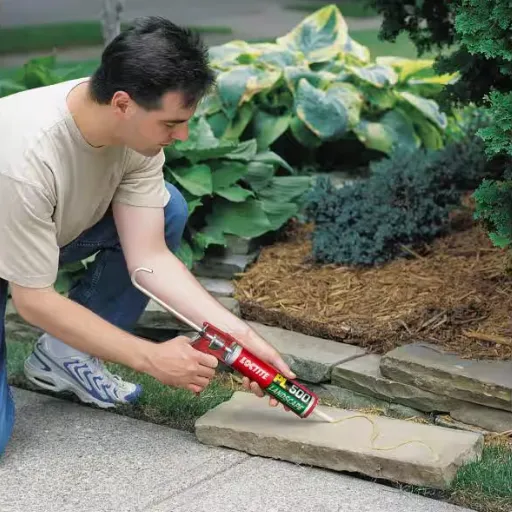
Always follow the adhesive manufacturer’s instructions for curing times and application methods. These are designed with a particular emphasis on optimal performance.
Never rush; always allow adhesives to cure fully before applying any load or stress to a bond.
Maintain the curing conditions, such as temperature and humidity, as specified by the manufacturer. If extreme conditions occur, the curing can be disrupted.
Test the full application on a small area before implementing it, to assess its performance and establish compatibility with the desired material.
Movement of bonded materials during the curing process should be minimal to achieve a strong and durable bond.
Choose the Right Product
When selecting the right product, I primarily focus on the specific needs of my project. Such needs include the materials to be bonded, the environmental conditions, strength, and durability. Reading the labels and specifications helps ensure that the selected product is best suited for the job at hand and will perform well.
Test on a Small Area
After the product is prepared for complete application, a test must be conducted in a small, isolated location before proceeding. That test determines whether the product behaves correctly with the materials and identifies any issues, such as discoloration, weak bonding, or other adverse chemical reactions. In line with the latest search engine trend data, one of the most frequently asked questions about adhesives is, “How long should you wait before testing adhesion strength?” Specialists and manufacturers recommend testing adhesion immediately after the glue has cured for the recommended time span specified on the label. This time can range from a few hours to 24 hours, depending on the adhesive’s particular properties. Patience is the best approach here to ensure maximum benefits and avoid potentially ruining your project in the process.
Follow Manufacturer Instructions
Another frequently asked question, in conjunction with search engine trends, is: “What happens if the curing time specified for that adhesive is not followed?” If we deviate from the given curing time, it will have a significant effect on the efficacy of the bonding and its strength. Incomplete curing would result in inferior adhesion, where the materials can separate prematurely or form a weak bond that undermines the project’s integrity. Thus, adhering to the instructions provided by the manufacturer is always best, as they are designed specifically for the given chemical composition of the adhesive and for which the particular adhesive is best suited.
Store Properly
The ideal condition to keep adhesives is an area that allows them to retain their original quality and performance. Conditioning adhesives due to exposure to direct sunlight or extreme temperatures will alter the chemical properties and, most importantly, their efficacy. One must ensure that containers are kept tightly closed after use to avoid exposure to air and moisture, as this may lead to premature curing or drying out. These minor precautions enable adhesives to have a prolonged shelf life, ensuring they will be available and effective when needed for a future job. Adhering to the manufacturer’s recommendations is the best practice.
Reference Sources
Here are three professional and authoritative reference sources that you can use to verify the correctness of your article on “best glue to use on concrete”:
A study in MDPI Materials explored the adhesion properties of epoxy glue to concrete, focusing on factors affecting bonding strength.
Published by Intelligent Concrete, the article explores the science behind concrete bonding and the enhancement of structural integrity through the use of adhesives.
Published by ScienceDirect, this study examines a specific case involving adhesives in concrete and timber construction, with a focus on performance and sustainability.







